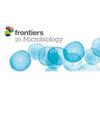Biocontrol of plant parasitic nematodes by bacteria and fungi: a multi-omics approach for the exploration of novel nematicides in sustainable agriculture
IF 4
2区 生物学
Q2 MICROBIOLOGY
引用次数: 0
Abstract
Plant parasitic nematodes (PPNs) pose a significant threat to global crop productivity, causing an estimated annual loss of US $157 billion in the agriculture industry. While synthetic chemical nematicides can effectively control PPNs, their overuse has detrimental effects on human health and the environment. Biocontrol agents (BCAs), such as bacteria and fungi in the rhizosphere, are safe and promising alternatives for PPNs control. These BCAs interact with plant roots and produce extracellular enzymes, secondary metabolites, toxins, and volatile organic compounds (VOCs) to suppress nematodes. Plant root exudates also play a crucial role in attracting beneficial microbes toward infested roots. The complex interaction between plants and microbes in the rhizosphere against PPNs is mostly untapped which opens new avenues for discovering novel nematicides through multi-omics techniques. Advanced omics approaches, including metagenomics, transcriptomics, proteomics, and metabolomics, have led to the discovery of nematicidal compounds. This review summarizes the status of bacterial and fungal biocontrol strategies and their mechanisms for PPNs control. The importance of omics-based approaches for the exploration of novel nematicides and future directions in the biocontrol of PPNs are also addressed. The review highlighted the potential significance of multi-omics techniques in biocontrol of PPNs to ensure sustainable agriculture.细菌和真菌对植物寄生线虫的生物控制:探索可持续农业中新型杀线虫剂的多组学方法
植物寄生线虫(PPNs)对全球作物生产力构成重大威胁,估计每年给农业造成 1,570 亿美元的损失。虽然合成化学杀线虫剂能有效控制 PPNs,但过度使用会对人类健康和环境造成有害影响。生物控制剂(BCA),如根瘤菌圈中的细菌和真菌,是控制 PPNs 的安全而有前途的替代品。这些生物控制剂与植物根系相互作用,产生胞外酶、次级代谢产物、毒素和挥发性有机化合物(VOCs),从而抑制线虫。植物根部的渗出物在吸引有益微生物进入受侵染根部方面也起着至关重要的作用。根瘤菌圈中植物与微生物之间针对 PPNs 的复杂相互作用大多尚未开发,这为通过多组学技术发现新型杀线虫剂开辟了新途径。先进的组学方法,包括元基因组学、转录物组学、蛋白质组学和代谢组学,已经促成了杀线虫化合物的发现。本综述总结了细菌和真菌生物防治策略的现状及其控制 PPNs 的机制。此外,还讨论了基于 omics 的方法对探索新型杀线虫剂的重要性以及 PPNs 生物防治的未来方向。综述强调了多组学技术在 PPNs 生物防治方面的潜在意义,以确保农业的可持续发展。
本文章由计算机程序翻译,如有差异,请以英文原文为准。
求助全文
约1分钟内获得全文
求助全文
来源期刊

Frontiers in Microbiology
MICROBIOLOGY-
CiteScore
7.70
自引率
9.60%
发文量
4837
审稿时长
14 weeks
期刊介绍:
Frontiers in Microbiology is a leading journal in its field, publishing rigorously peer-reviewed research across the entire spectrum of microbiology. Field Chief Editor Martin G. Klotz at Washington State University is supported by an outstanding Editorial Board of international researchers. This multidisciplinary open-access journal is at the forefront of disseminating and communicating scientific knowledge and impactful discoveries to researchers, academics, clinicians and the public worldwide.
 求助内容:
求助内容: 应助结果提醒方式:
应助结果提醒方式:


